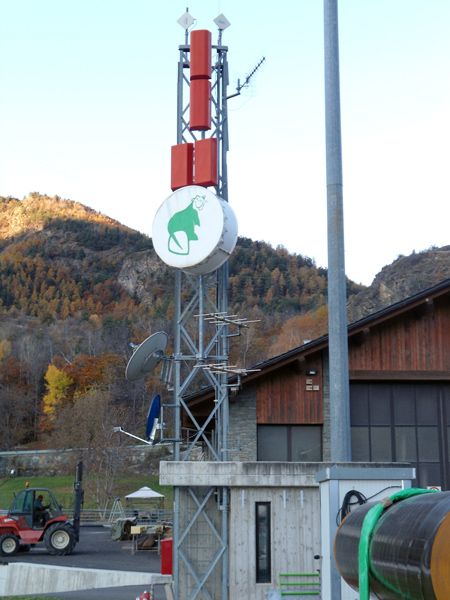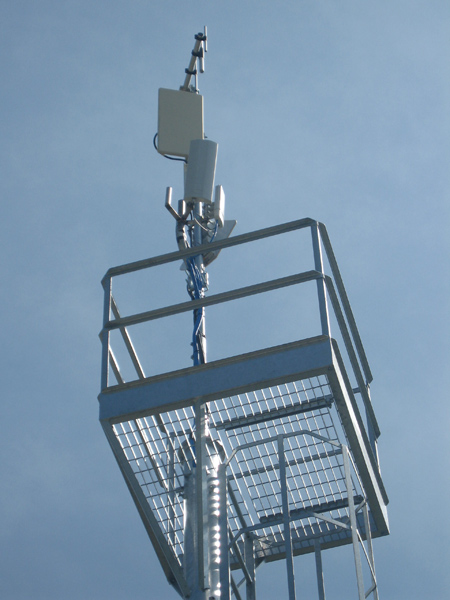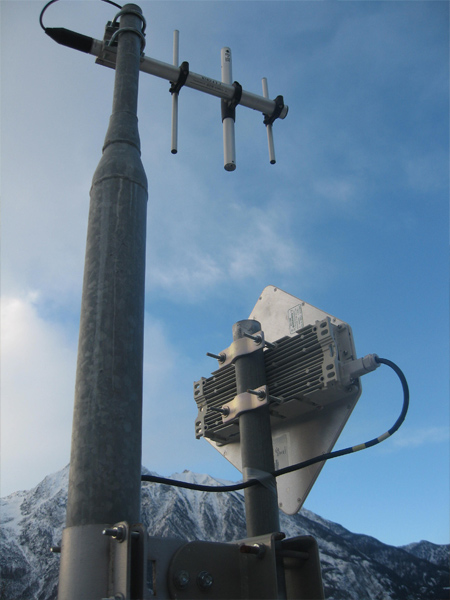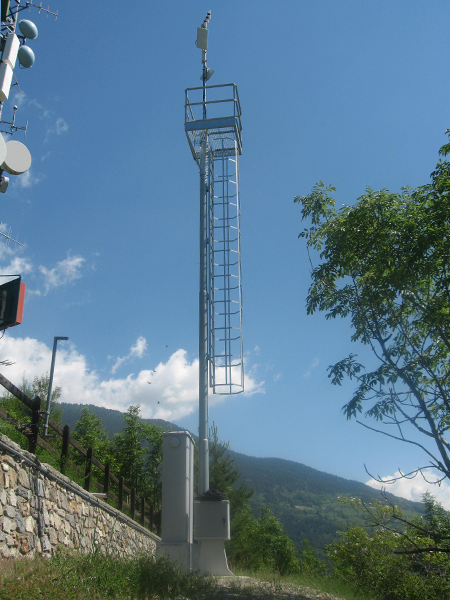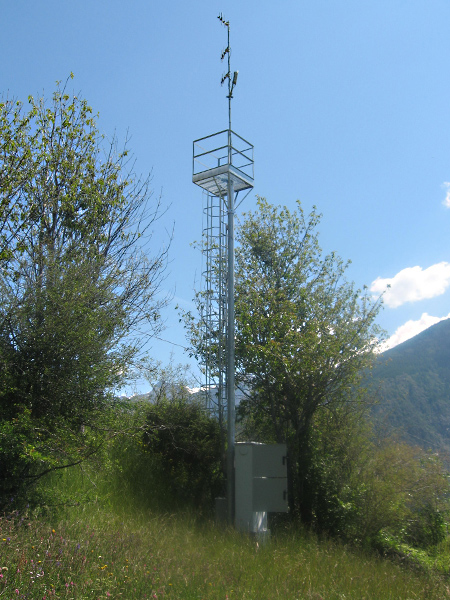REMOTE CONTROL
Supervision and remote control center
Technological progress, evolution and professionalism make the Supervision and Remote Control Centre an increasingly cutting-edge tool. Established in the early 90s, it is located at the Fratelli Ronc headquarters in Introd.
It remotely controls around 50 plants. The sites not connected to the telephone network are connected to the centre via UHF radio modems, while the others are connected via GPRS modems.
All remote control and management systems are based upon four fundamental aspects:
- Acquisition of physical characteristics
- Transmission to the remote control centre
- Visualisation and processing
- Data saving (Backup)
ACQUISITION
In our case the physical characteristics are typically of a hydraulic nature:
- Levels (%)
- Pressure (bar)
- Flow rate (l/s)
There are also other kinds of information, such as the statuses:
- Open
- Closed
- On
- Off
Given that any physical characteristic comes in the form of an analogue value, it must be converted into a numerical value, in order to allow the data to be processed.
This operation is carried out by remote acquisition units. Typically these units are PLCs (Programmable logic controllers) with technical features suited to our application.
The physical characteristics are read continuously by the PLC (acquisition frequency 100 ms) and are available in a dedicated memory. The same happens with the statuses.
TRANSMISSION
The numerical data concerning the physical characteristics we are interested in must be sent to the remote control centre. Thus data transmission takes place, allowing the central computer to read the information contained in the PLC.
In the simplest of cases, such as the tank of an aqueduct, the communication system comprises a narrowband digital radio modem (12.5 kHz to 436.00 MHz). These appliances are based on modern digital radio modulation techniques, which transmit small quantities of data over long distances with little power (low power = low electromagnetic pollution). In this way it is sufficient to identify a point in sight to illuminate a vast geographical area, reducing the need for repeated radio relaying. All the stations converge in a single point and from here they reach the remote control centre along a broadband backbone (25 MHz to 5.4 GHz).
If high reliability is required in terms of service continuity, such as for example for hydroelectric power stations, a secondary (or emergency) system is put in place to support the main transmission system. In this case the communication system may be GPRS or ADSL. Transmission towards the remote control centre is done by VPN (Virtual Private Network). This particular communication system uses the Internet as a means of transmission. Given that the Internet is a public domain, the data must be protected in order to prevent it from being intercepted. The VPN encapsulates the data in a virtual tunnel which connects the peripheral to the centre, preventing outside access to data.
The commutation between the main and secondary channels is automatic, and it is the computer which makes the choice. The quality of the connections is constantly monitored, and as soon as it drops below the threshold value the system generates an alarm to warn that the connection to a station is no longer available. The centre interrogates the remotes typically at a frequency of 30’.
VISUALIZATION
Once the data reaches the central computer it is visualised.
The data can be consulted in different ways:
- Locally – on video pages that reproduce it, in the case of the aqueduct tank, the hydraulic diagram showing the physical characteristics of each element including flow rate, levels, pressures, as well as the open or closed status of the valves etc.
- Remotely – in web pages which represent the data in table form. This type of visualisation is less attractive in graphic terms, but offers the system greater visualisation flexibility, above all with the use of GPRS PDAs. In fact, GPRS coverage is available over most of the territory but at the same time does not offer access to the Internet with a sufficient bandwidth to allow data visualisation in graphic form.
In both cases, when consulting the data, the operator can request the updating of data in real time. Of course it is also possible to remotely control functions, such as for example, forcing the status of a valve or resetting a tripped switch.
There is also another possibility for viewing data: by entering a password, external users such as public institutions or the administrators of external companies can access a reserved area that is customised for the viewing of their relative data. The data is presented in table and/or graphic form, and can be downloaded in the form of an excel file.
PROCESSING
Automatic data processing is necessary above all because the remote control centres are not permanently staffed. The computer continuously scans the data received and analyses its consistency to check that all values fall within the pre-set reliability thresholds. If a value exceeds the set threshold, the computer generates and alarm.
The alarms can be viewed on the screen of the centre computer, and when programmed, sends a text message to the staff on call. At the same time, each alarm is recorded in the alarms log.
Through statistical calculations, it is also possible to identify possible anomalies which emerge only over longer time spans
MEMORISATIONS
All the data received is recorded in special tables, one for each plant, in an SQL-Server database. The recordings are made every 30’ and can be viewed by the operators in graphic form at any time. The databases are distributed over two servers configured in Mirroring in order to guarantee service continuity and ensure the integrity of the data in all circumstances. The databases are synchronised once a day so that the loss of data from one instance of the database does not immediately affect the other, allowing for data recovery. In the event of an emergency, such as a fire or a flood, the databases are delocalised onto another sever in a different geographical location.

